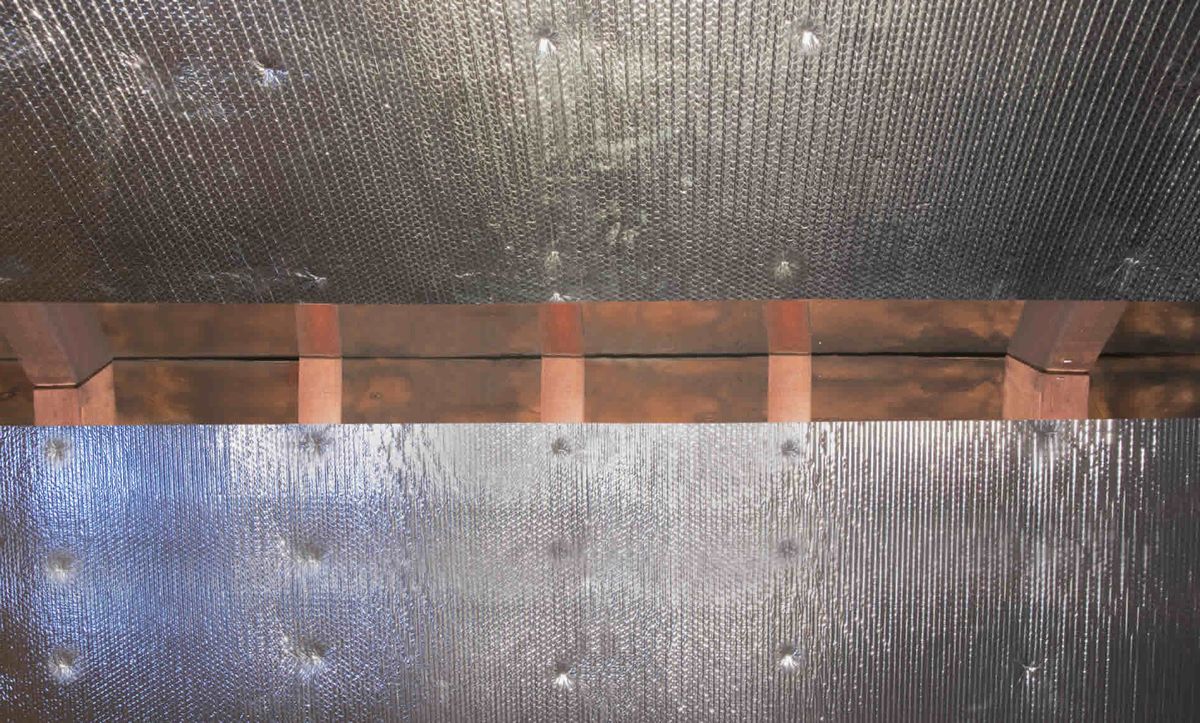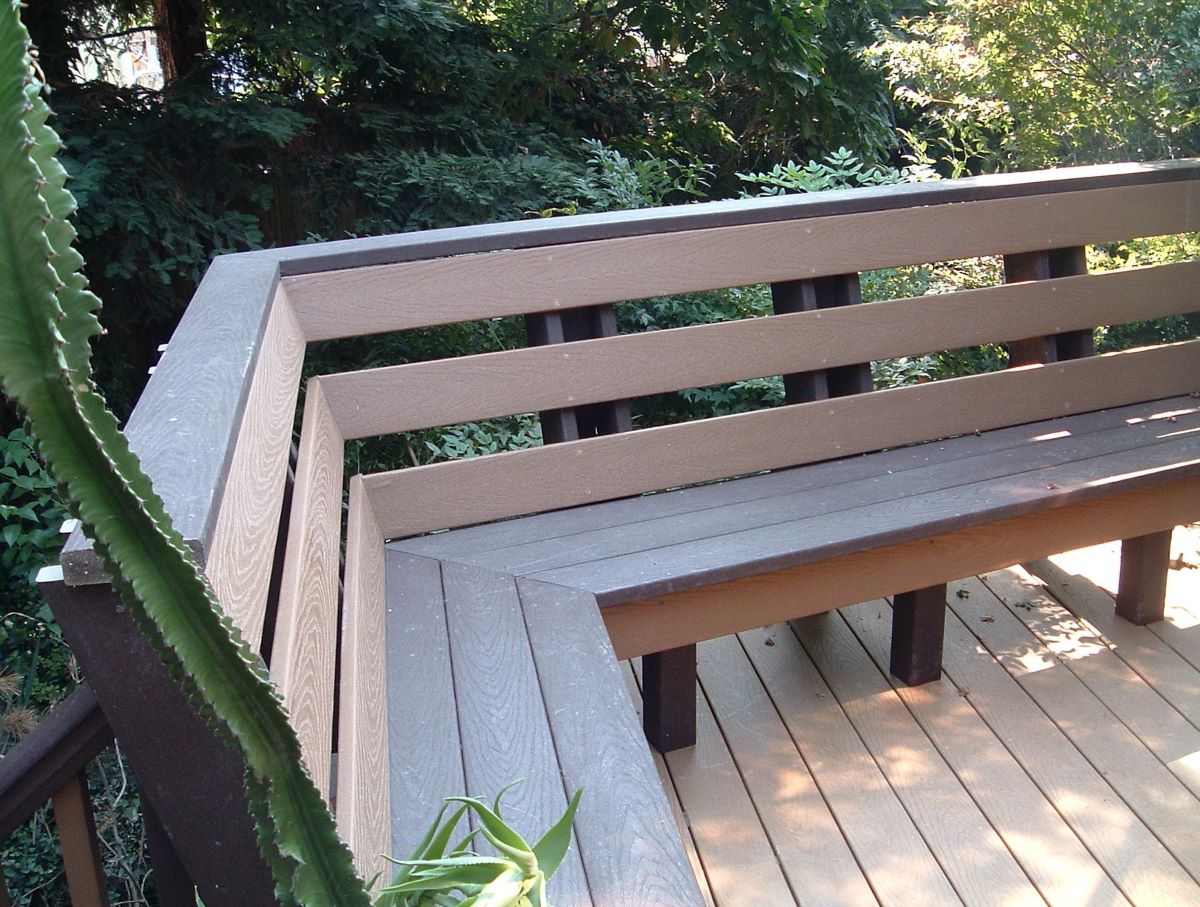Home>Ideas and Tips>Upgrading Your Home’s Deck With DIY Built-in Seating


Ideas and Tips
Upgrading Your Home’s Deck With DIY Built-in Seating
Modified: October 27, 2024
Transform your outdoor space with DIY built-in deck seating. Enhance comfort, style, and functionality with our step-by-step guide.
(Many of the links in this article redirect to a specific reviewed product. Your purchase of these products through affiliate links helps to generate commission for Storables.com, at no extra cost. Learn more)
Introduction
Are you looking to transform your outdoor space into a haven of relaxation and entertainment? One of the most effective ways to achieve this is by adding a new deck to your home. However, a deck is not just about the structure; it's about creating a seamless blend of indoor and outdoor living. One of the key elements that can elevate your deck from a mere outdoor space to a functional and cozy living area is built-in seating. In this article, we will explore the benefits of adding a new deck to your home and provide a detailed guide on how to upgrade your deck with DIY built-in seating.
Read more: Upgrading Your Bedroom Storage DIY Solutions
The Benefits of Adding a New Deck
Before we dive into the specifics of building built-in seating, let's first discuss the broader benefits of adding a new deck to your home.
Enhanced Outdoor Living
A new deck transforms your yard into a versatile outdoor oasis that serves as an extension of your home. It's perfect for relaxation, family time, or entertaining friends. Here are a few ways you can transform your outdoor living space with a new deck:
- Multi-Tiered Design: Choose a deck with different levels for added style. Each tier can have a specific use, like dining or lounging, making your deck more versatile.
- Fire Features: Introduce warmth with a fireplace or fire pit on your deck. It not only lets you use your deck in cooler seasons but also adds a charming touch to your outdoor setting.
- Outdoor Lighting: Make your deck usable at night by adding lights. Whether string lights, lanterns, or built-in fixtures, they create a cozy atmosphere and ensure safety after sunset.
- Built-in Seating: Save space and enhance comfort with built-in seating. It gives your deck a seamless look and eliminates the need for extra furniture, leaving more room for other activities.
- Shade Solutions: Install pergolas, awnings, or umbrellas for shaded areas on your deck. This not only provides relief from the sun but also extends the time you can enjoy your outdoor space, especially on hot summer days.
Connection With Nature
A deck allows you to connect with nature in a way that indoor spaces cannot. By bringing the outdoors closer to your living area, you create an environment that promotes well-being and relaxation.
Entertainment Hub
A deck is an ideal place for entertainment. Whether it's hosting a barbecue, having a family dinner, or simply enjoying a quiet evening with friends, a well-designed deck can accommodate all your needs.
Healthy Outdoor Lifestyle
Spending time outdoors has numerous health benefits. A deck provides an opportunity to engage in outdoor activities like gardening, reading, or simply enjoying fresh air.
Increased Property Value
Adding a deck can significantly increase your property value. It enhances the aesthetic appeal of your home and provides additional living space, making it more attractive to potential buyers.
Improved Aesthetic Appeal
Beyond functionality, a deck enhances your home's overall look, creating a cohesive design that makes your living space feel more expansive and visually connected. Here are a few things to consider while designing your new deck:
- Consistent Railing: Pick a railing style that looks like the features of your home. A similar railing design makes your deck feel like it belongs.
- Add Plants: Use planters and greenery that fit in with your landscaping and home style. Plants bring in a touch of nature and make the whole space look better.
- Matching Materials: Choose deck materials that go well with your home's look. This means picking colors and textures that blend nicely with what you already have.
- Coordinate Furniture: Make sure your outdoor furniture matches the style inside your home. This makes the deck seem like an extra living space that's connected to the inside.
- Plan Sightlines: Arrange your deck layout so you can see from inside and outside the house. This helps connect your indoor and outdoor spaces, making your living area seem larger.
Customization Options
Decks offer a playground for creativity. Choose eye-catching deck board colors, explore unique designs, and customize them to fit your needs, ensuring your deck reflects your style.
Here are a few ways you can customize your deck to truly make it yours:
- Hot Tub or Spa: Create a spa-like retreat by incorporating a hot tub or spa into your deck design, providing relaxation year-round.
- Built-In Seating: Consider adding built-in benches or seating. This not only saves space but can match your deck's design seamlessly.
- Vertical Gardens: Introduce greenery and enhance aesthetics with vertical gardens or planters, bringing nature to your deck space.
- Themed Decor: Consider a theme for your deck, whether it's coastal, rustic, or modern, to create a cohesive and personalized outdoor space.
- Functional Zones: Divide your deck into zones based on your needs, like cooking, dining, or lounging. This customization tailors the space to how you'll use it.
Steps to Building Your New Deck
Planning Your Deck
Before you start building, it's crucial to plan your deck carefully. Here are some steps to consider:
- Measure Your Space: Measure the area where you plan to build your deck. Consider the size of your yard and any obstacles like trees or power lines.
- Check Local Building Codes: Ensure that your deck complies with local building codes. This includes checking for height restrictions, material requirements, and safety standards.
- Choose Materials: Select materials that are durable and suitable for outdoor use. Composite decking is a popular choice due to its low maintenance and durability.
- Design Your Deck: Create a detailed design of your deck, including the layout, size, and features like built-in seating and fire features.
Building the Framework
Once you have your plan in place, it's time to start building the framework of your deck.
- Locate and Dig Footings: To locate the footings that support the outside of the deck, start by locating the ledger on the house. Then set up a stringline at the location of the deck frame’s outermost face. Using the Pythagorean theorem, create perpendicular lines from the ends of the ledger to the stringline. This establishes the deck’s perimeter, which you need to lay out and dig the footings.
- Calculate Footing Size: Calculate the load each footing will carry and determine the necessary size. Instead of digging large holes for the outboard footings and a middle footing, dig smaller holes and flare their bottoms. This method allows for spread footings that provide better support.
- Pour Concrete: Pour concrete into modified footing tubes to create spread footings. Place anchor bolts and check their locations with a stringline. Once everything is set, grade the soil from the footing holes to establish a positive slope away from the house.
Framing Your Deck
With your footings in place, it's time to frame your deck.
- Construct Post-to-Frame Attachment: Use notched 6×6 posts and double 2x12s on the perimeter (notched into 6×6 and held with 1/2”x6” carriage bolts). This ensures a sturdy frame that can support built-in seating and other features.
- Add Joists and Beams: Install joists and beams according to your design. Ensure that these components are securely attached to the posts and ledger board.
Installing Decking
Once your frame is in place, it's time to install decking.
- Choose Decking Material: Select decking material that fits your design and budget. Composite decking is a popular choice due to its durability and low maintenance.
- Install Decking Boards: Use a hidden-fastener system that locks into edge slots on the boards. This ensures a smooth finish and prevents warping.
Adding Built-In Seating
Now that your deck is framed and decked, it's time to add built-in seating.
Designing Your Bench
To create a bench that suits your needs, consider measuring the height and depth of your favorite chair. Typically, the seat is around 19 inches above the floor, and the front-to-back measurement is about 22 inches.
Building the Framework
Complete the framework for your bench in under an hour using four small rectangles with varying lengths and widths. Attach the seat to the back's tall vertical wall while providing additional support with low, long walls.
End Walls and Capping
At each end of the bench, build small walls that match the height of the arms on your existing chairs. Cap these end walls with 1-by-6-inch material, creating a perfect place for smaller plates and glasses.
Materials and Construction
Use coated timber screws instead of nails and treat all framing lumber to resist rot. Ensure that lumber is straight before assembling parts.
Tips for Customizing Your Deck
Adding a Hot Tub or Spa
Create a spa-like retreat by incorporating a hot tub or spa into your deck design. This provides relaxation year-round and can be a unique selling point for potential buyers.
Built-In Benches
Consider adding built-in benches or seating. This not only saves space but can match your deck's design seamlessly, creating a cohesive look.
Vertical Gardens
Introduce greenery and enhance aesthetics with vertical gardens or planters. This brings nature to your deck space and adds visual appeal.
Themed Decor
Consider a theme for your deck, whether it's coastal, rustic, or modern. This creates a cohesive and personalized outdoor space that reflects your style.
Functional Zones
Divide your deck into zones based on your needs, like cooking, dining, or lounging. This customization tailors the space to how you'll use it, making it more functional and enjoyable.
Conclusion
Upgrading your home's deck with DIY built-in seating is a rewarding project that can transform your outdoor space into a haven of relaxation and entertainment. By following these steps and tips, you can create a seamless blend of indoor and outdoor living that enhances both functionality and aesthetic appeal. Whether you're looking to increase property value, improve your quality of life, or simply enjoy more time outdoors, adding built-in seating to your deck is an excellent investment. So why wait? Start planning your dream deck today!
This article provides a comprehensive guide on how to upgrade your home's deck with DIY built-in seating. From planning and designing your deck to installing decking and adding built-in benches, every step is detailed to ensure that you can achieve professional-looking results without professional help. Whether you're a seasoned DIY enthusiast or just starting out, this guide offers valuable insights and practical tips to help you create a beautiful and functional outdoor space that enhances your home and lifestyle.
Was this page helpful?
At Storables.com, we guarantee accurate and reliable information. Our content, validated by Expert Board Contributors, is crafted following stringent Editorial Policies. We're committed to providing you with well-researched, expert-backed insights for all your informational needs.











0 thoughts on “Upgrading Your Home’s Deck With DIY Built-in Seating”